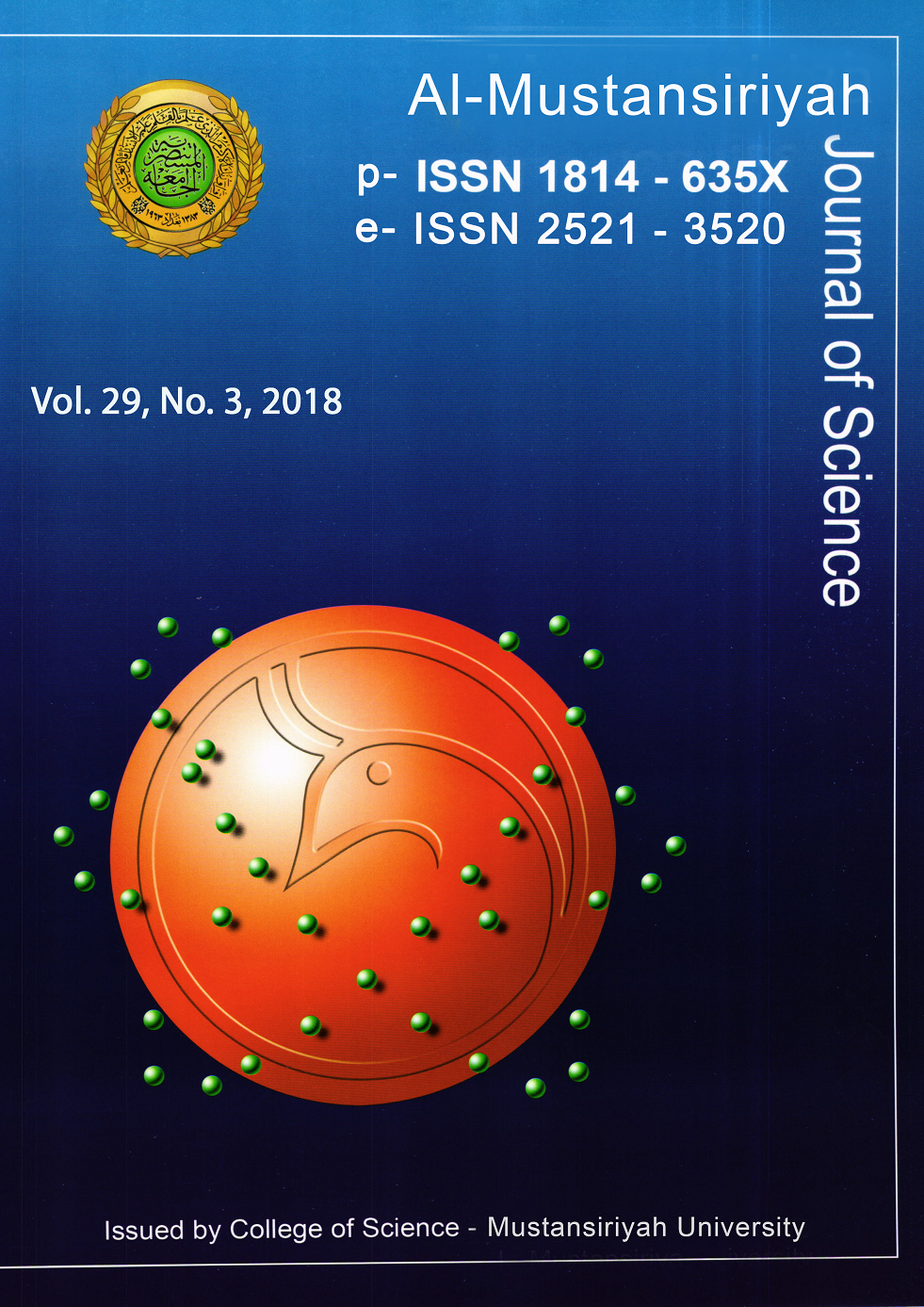Image Processing of SEM Image Nano Silver Using K-means MATLAB Technique
DOI:
https://doi.org/10.23851/mjs.v29i3.635Keywords:
K-means, Nano Image, Threshold, Image Processing.Abstract
Nanotechnology is one of the non-exhaustive applications in which image processing is used. For optimal nanoparticle visualization and characterization, the high resolution Scanning Electron Microscope (SEM) and the Atomic Force Microscope (AFM) are used. Image segmentation is one of the critical steps in nanoscale processing. There are also different ways to reach retail, including statistical approximations.In this study; we used the K-means method to determine the optimal threshold using statistical approximation. This technique is thoroughly studied for the SEM nanostructure Silver image. Note that, the image obtained by SEM is good enough to analyze more recently images. The analysis is being used in the field of nanotechnology. The K-means algorithm classifies the data set given to k groups based on certain measurements of certain distances. K-means technology is the most widely used among all clustering algorithms. It is one of the common techniques used in statistical data analysis, image analysis, neural networks, classification analysis and biometric information. K-means is one of the fastest collection algorithms and can be easily used in image segmentation. The results showed that K-means is highly sensitive to small data sets and performance can degrade at any time. When exposed to a huge data set such as 100.000, the performance increases significantly. The algorithm also works well when the number of clusters is small. This technology has helped to provide a good performance algorithm for the state of the image being tested.Downloads
References
G. Poletti, F. Orsini, C. Lenardi and E. Barborini, “A comparative study between AFM and SEM imaging on human scalp hair,” Journal of Microscopy-Oxford, vol. 211, no. 7, 2003, pp. 249-255.
A. P. Chuklanov, S. A. Ziganshina and A. A. Bukharaev, “Computer program for the grain analysis of AFM images of nanoparti-cles placed on a rough surface,” Surface and Interface Analysis, vol. 38, no. 4, 2006, pp. 679-681.
E. Ficarra, L. Benini, E. Macii and G. Zuc-cheri, “Automated DNA fragments recogni-tion and sizing through AFM image pro-cessing,” IEEE Transactions on Information Technology in Biomedicine, vol. 9, no. 4, 2005, pp. 508-517.
T. S. Spisz, Y. Fang, R. H. Reeves, C. K. Seymour, I. N. Bankman and J. H. Hoh, “Automated sizing of DNA fragments in atomic force microscope images,” Medical & Biological Engineering & Computing, vol. 36, no. 6, 1998, pp. 667-672.
R. R. N. Senthilkumaran, “A Study on Rough Set Theory for Medical Image Seg-mentation,” International Journal of Recent Trends in Engineering, vol. 2, november 2009.
S. k. A. P. Prasad Dakhole, “Fabric Fault Detection Using Image Processing Matlab,” International Journal For Emerging Trends in Engineering and Management Research (IJETEMR), vol. 2, no. 1, 21 january 2016.
C. R. Tippana, “Homogeneous Regions for Image Segmentation Based on Fuzzy,” in-ternational journal & magazine of engineer-ing, technologymanagement and research.
S. panda, “Color Image Segmentation Us-ing K-means Clustering and Thresholding Technique,” IJESC, march 2015.
J. B. MacQueen, (1967). Some Methods for classification and Analysis of Multivar-iate Observations. Proceedings of 5th Berkeley Symposium on Mathematical Statistics and Probability.1.University of California Press. pp. 281–297. MR 0214227. Zbl 0214.46201. Retrieved 2009-04-07.
H. Steinhaus,(1957). "Sur la division des corps matériels en parties". Bull. Acad. Polon. Sci. (in French). 4 (12): 801–804. MR 0090073. Zbl 0079.16403.
S. P. Lloyd, (1957). "Least square quanti-zation in PCM". Bell Telephone Laborato-ries Paper. Published in journal much later: Lloyd., S. P. (1982). "Least squares quan-tization in PCM" (PDF). IEEE Transac-tions on Information Theory. 28 (2): 129–137.doi:10.1109/TIT.1982.1056489. Re-trieved 2009-04-15.
E.W. Forgy (1965). "Cluster analysis of multivariate data: efficiency versus inter-pretability of classifications". Biometrics. 21: 768–769. JSTOR 2528559.
L. H. a. J. Y. LihuaTian, “Research on Im-age Segmentation based on Clustering Al-gorithm,” International Journal of Signal Processing, Image Processing and Pattern Recognition, vol. 9, pp. 1-12, 2016.
D. M. Christopher, P. Raghavan and H. Schütze, "An Introduction to Information Retrieval", Cambridge University Press, Cambridge, England, April 1, 2009.
Downloads
Key Dates
Published
Issue
Section
License
Copyright (c) 2019 Al-Mustansiriyah Journal of Science

This work is licensed under a Creative Commons Attribution 4.0 International License.
(Starting May 5, 2024) Authors retain copyright and grant the journal right of first publication with the work simultaneously licensed under a Creative Commons Attribution (CC-BY) 4.0 License that allows others to share the work with an acknowledgement of the work’s authorship and initial publication in this journal.






















